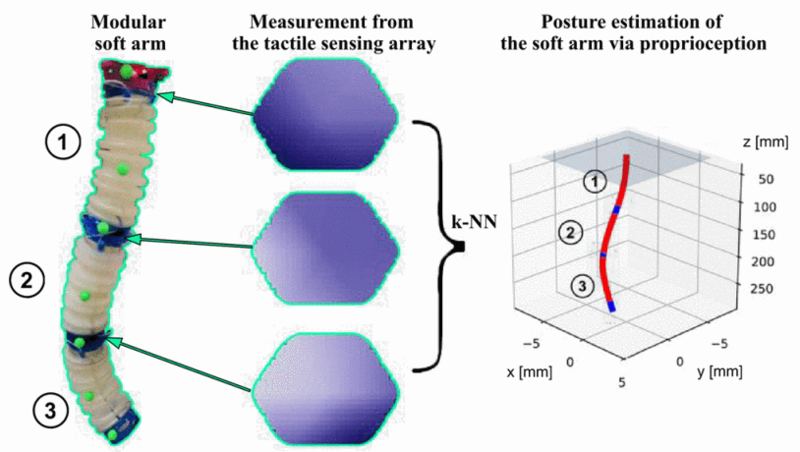Sense
Embodied intelligence requires a rich perception of the physical world. A sense of touch is essential yet often lacking in robotics today. Soft robotics - considering compliance, morphology and mechanical intelligence - plays a key role in improving robot resilience and versatility. It is a key enabler for manipulation tasks as well as physical human-robot interactions, where contact generates tactile experiences instrumental for relationship building. With a particular focus on large-scale, flexible, tactile perception, this theme will focus on novel sensing methodologies necessary to support our Flagships. It will bring together the software, mechanical hardware, and electronics that will allow robots to leverage tactile-aware physical interaction to provide a step-change in capabilities for embodied intelligence.
Ouyang W, He L, Albini A, Maiolino P
2022 IEEE 5th International Conference on Soft Robotics (RoboSoft)
Soft robotic arms are designed to execute dexter-ous tasks safely in cluttered environments due to their inherent compliance and infinite degrees of freedom. Closed-loop control requires proprioceptive sensing to retrieve the spatial configu-ration of the robot. However, the integration of soft sensing in the soft continuum body is still an ongoing challenge.

In this paper, we present a highly integrated pneumatically actuated soft robotic arm that consists of 1) an omnidirectional actuator design for multi-material 3D printing, 2) a modular approach with fast assembling connectors and 3) a tactile sensing array embedded in the joint of each module. The in-joint placement of the tactile sensing array is used to map the variation of stress distribution between the two connected modules and the posture of the actuator with learned k-nearest neighbors regression. The experimental results showed that the method estimated the posture of a three-segment soft arm with a mean error of 5.64 mm for the tip location.
Shorthose O, Albini A, He L, Maiolino P
2022 IEEE Robotics and Automation Letters
Humans rely on distributed tactile sensing in their hands to achieve robust and dexterous manipulation of delicate objects. Soft robotic hands have received increased attention in recent years due to their adaptability to unknown objects and safe interactions with the environment. However, the integration of distributed sensing in soft robotic hands is lacking. This is largely due to the complexity in the integration of soft sensing solutions with the hands.

This letter proposes a novel soft robotic hand that incorporates an active palm and distributed pneumatic tactile sensing in both the fingers and the palm. Multi-material 3D printing allows the tactile sensors to be directly printed on the hand, whereas conventional tactile approaches require the sensors to be attached as part of multiple fabrication procedures. Active degrees of freedom are introduced in the palm to achieve increased dexterity. The proposed hand successfully performed 32 of the 33 Feix taxonomy grasps and all 11 Kapandji thumb opposition poses.


